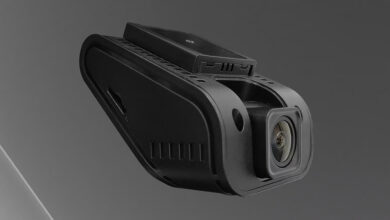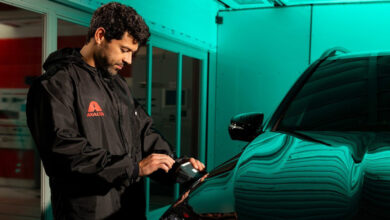Lumileds: Headlight Age Affects Older Drivers
EDITOR’S NOTE: The following blog was written by Lumileds.
It’s a well-known fact that headlight bulbs wear out with age and use just like tires, shocks, and brakes. As the bulbs get older, they start to dim, putting less light on the road. This can create serious safety issues at night for all drivers. In spite of the fact that there is five times more traffic during the daytime, statistics show that approximately 65 percent of accidents occur at night or in poor lighting conditions.
The primary reason is usually attributed to poor driver vision caused by decreased visual acuity. Visual acuity is the amount of light provided by the environment, and at night, it can be reduced by up to 70 percent. Because the human eye is not adapted for nocturnal vision, colors tend to disappear, contrast fades away, and drivers are often blinded by the oncoming light from other vehicles. In essence, nighttime drivers can experience the feeling of short sightedness and also lose some depth perception.
Why replace light bulbs when they get old?
According to Ann-Marie Hines, senior marketing manager at Lumileds, a global lighting solutions company and the exclusive supplier of Philips automotive lighting products, the answer is simple.
“The filament in a headlight bulb ages with use, time, and exposure to the elements,” Hines notes. “As a result, it becomes fragile and starts to deteriorate, and this causes the light output to diminish. At the end of a typical service life, perhaps two to three years, headlight bulbs will likely be projecting a much shorter and less powerful beam light than when they were new. From a driver’s point of view this is a critical safety concern.”
Older drivers need more light
This problem becomes even more critical with older drivers. The amount of light that the human eye needs to see properly increases exponentially with age. That means as drivers get older they need more light on the road. This is because the lens of the human eye tends to become more opaque with age and reduces the amount of light the eye can receive.
At age 40, the average driver may already need twice as much light as a 20-year-old. At age 65, that need is dramatically higher. So, as the population of licensed drivers 65 years and older increases, the safety issue increases with it. According to the National Highway Traffic Safety Administration (NHTSA), there were 36.8 million licensed drivers aged 65 and older on the road in 2013. By 2030, the NHTSA estimates that there will be more than 57 million drivers on the road in this age group.
Put more light on the road
The easy solution to this dilemma is to just put more light on the road. The best way to do this is to replace old headlight bulbs with new bulbs and make sure headlight lenses are clear of any clouding and hazing. Lumileds engineers recommend replacing headlight bulbs after two to three years as a good maintenance practice. They also suggest replacing both headlight bulbs at the same time to ensure a properly lit road ahead and the full benefit of the vehicle’s headlights as originally intended by the carmaker.
Old bulbs can be replaced with new standard OE quality replacements to restore a vehicle’s lighting performance to original condition, or lighting can be upgraded with advanced technology for even better light output.
Better lighting will improve driver vision and visibility at night, and in turn increase safety. According to a recent study from the automotive club AAA, the halogen headlights found in more than 80 percent of vehicles on the road today failed to safely illuminate unlit roadways, even when vehicles are moving at speeds as low as 40 miles per hour. A new set of upgrade halogen bulbs might just make a difference in seeing better and being seen.
Find more information at www.philipsautolighting.com and lumileds.com.



